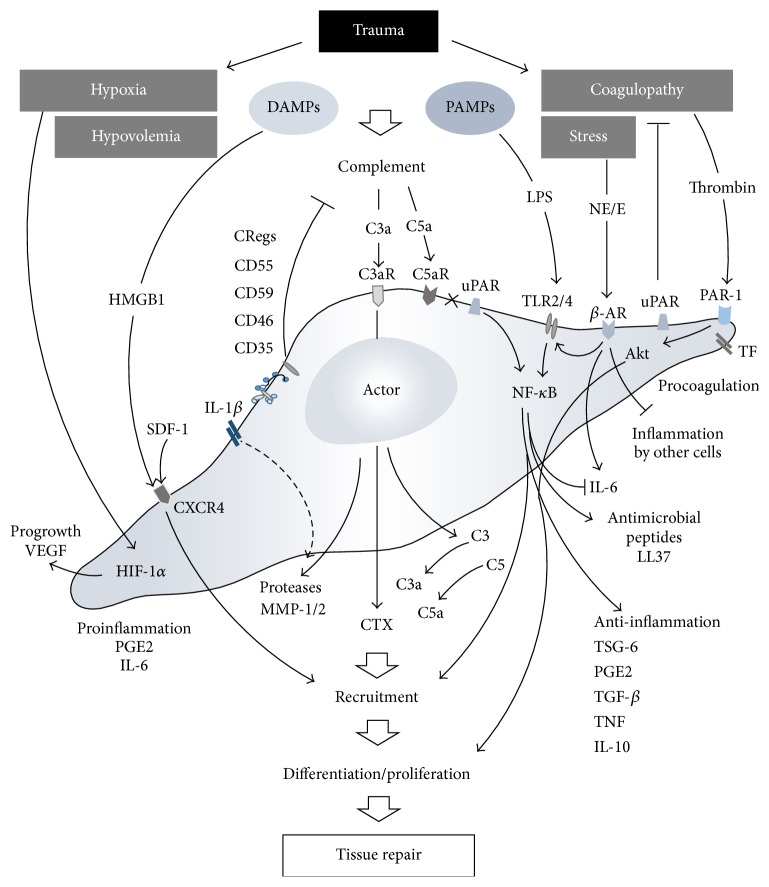Figure 1.
After trauma, MSCs are challenged with local and systemic hypoxia, hypovolemia, disturbances in coagulation, and released danger molecules, inducing them to act as mediators in vast numbers of processes and ideally contributing to successful tissue repair. C3aR: complement C3a receptor; C5aR: complement C5a receptor; CRegs: complement regulatory proteins; CTX: chemotaxis; CXCR4: C-X-C chemokine receptor type 4; DAMPs: damage-associated molecular patterns; HIF-1α: hypoxia inducible factor-1 alpha; HMGB-1: high mobility group box 1; IL: interleukin; LPS: lipopolysaccharides; MMP: matrix metalloproteinase; NE/E: norepinephrine/epinephrine; β-AR: beta-adrenergic receptor; NF-κB: nuclear factor kappa-light-chain-enhancer of activated B cells; PAMPs: pathogen-associated molecular patterns; PAR-1: protease-activated receptor 1; PGE2: prostaglandin E2; SDF-1: stromal cell-derived factor-1; TF: tissue factor; TGF-β: transforming growth factor beta; TLR: toll-like receptor; TNF: tumor necrosis factors; TSG-6: tumor necrosis factor-inducible gene 6 protein; uPAR: urokinase receptor; VEGF: vascular endothelial growth factor.

